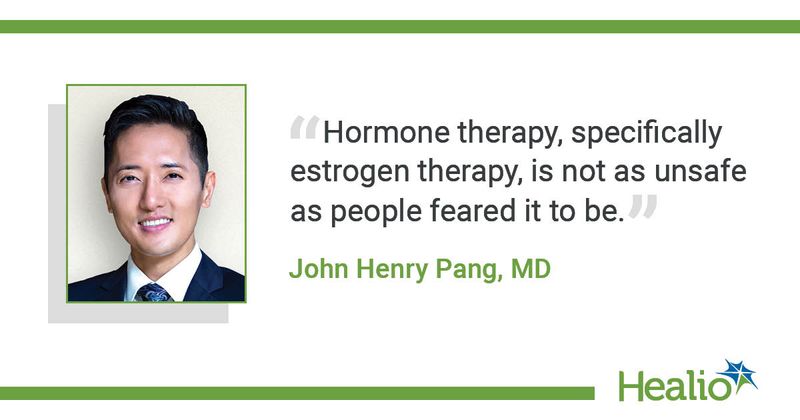No increased VTE risk with continued HT during gender-affirming surgery
Transgender and gender nonbinary patients who remain on estrogen hormone therapy during gender-affirming surgery do not have an increased risk for venous thromboembolism, according to findings published in The Journal of Clinical Endocrinology & Metabolism.
According to John Henry Pang, MD, assistant professor of plastic and reconstructive surgery at the Icahn School of Medicine at Mount Sinai and Center for Transgender Medicine and Surgery, and colleagues, the findings contradict the common practice of stopping HT for transgender and gender nonbinary patients about to undergo vaginoplasty.

“HT, specifically estrogen therapy, is not as unsafe as people feared it to be,” Pang told Healio. “We can carefully reconsider what we put our patients through in an attempt to protect them from a harm that may not actually be present.”
Pang and colleagues conducted a retrospective chart review of 919 transgender and gender nonbinary adults who had gender-affirming surgery at the Mount Sinai Center for Transgender Medicine and Surgery between November 2015 and August 2019. There were 1,396 unique cases during the study period. In July 2018, Mount Sinai allowed transfeminine patients to continue estrogen HT while undergoing surgery. There were 903 cases performed without HT suspension and 483 cases in which HT was suspended for 1 week before surgery. Eight transfeminine cases were performed without HT peri-operatively, but the patients had been on estrogen for multiple years in the past. Two transmasculine cases were performed without HT as it was not a requirement for chest masculinization surgery. Researchers recorded surgery type, preoperative and perioperative HT regimen, and VTE prophylaxis management and events.
Of the 1,396 cases in the study, only one individual had a VTE event. The patient had estrogen HT suspended for 1 week before surgery and presented to the ED with VTE 20 days after having a primary vaginoplasty.
There were no VTE events recorded for the 903 cases without HT suspension. This includes 576 transfeminine cases in which HT continued through surgery. Of this group, 212 had primary vaginoplasty in which HT continued. Nearly all individuals who underwent primary vaginoplasty were on estradiol (97%). The mean postoperative follow-up time was 313 days from primary vaginoplasty and 285 days for the entire study cohort.
Pang said researchers were not surprised at the findings because of the low incidence rates for VTE.
“We know that its incidence is very low, and through multiple large studies that have been done, we know what modifiable risk factors exist that put people at higher risk for venous thromboembolism disease or events,” Pang said.
“Often times, even in medicine, we can get distracted by a fear of an unproven harm, HT in this case, when really our efforts should concentrate on modifying known risk factors — take for example, early walking after surgery to decrease venous thromboembolism events,” Pang added.
Pang said the findings show estrogen HT can continue safely for transgender and gender nonbinary patients during vaginoplasty. He said the findings are crucial because of the psychological and emotional harm transfeminine individuals face when HT is stopped before surgery.
“In the United States, it is more common than not for providers to stop estrogen therapy prior to surgery in this community,” Pang said. “When you see evidence like this being presented, it gives health care providers an opportunity to revisit that practice.”
For more information:
John Henry Pang, MD, can be reached at john.pang@mountsinai.org.

